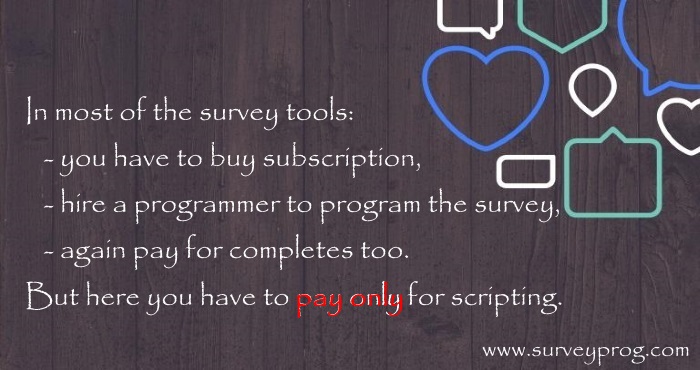SurveyProg Research Solution
Welcome to the blog of market research
A Review Of survey design
We design surveys using our surveyProg tool. April 19, 2018
The survey design specifically involves:
- Creating, brainstorming and verifying the survey goals
- Identifying the sample from the target population
- Choosing a survey method
- Creating a questionnaire or survey
- Conducting a pilot survey
- Revising the questionnaire
- Executing the full survey
- Analyzing and interpreting the data gathered
- Communicating the results
Step 1: Survey Goals
The survey goals simply state what you want to learn and who do you want to learn that information from. If you have answered these two questions, you will be led to the questions: "Is survey the right method to use?" and "Which type of survey should I conduct?" In other words, the goals of the survey are your guide towards the creation of the right questions to ask the right distribution technique or survey methodology to utilize, and the right people to take as respondents.Step 2: Sampling
Most of the time, the number of people that make up the target population exceeds your capacity to include all of them in the survey. For this reason, the sampling process is conducted before executing a survey. A sample is a group taken as respondents in order to represent a larger target population.Step 3: Survey Methodology
There are several types of survey which are categorized according to the length of time involved (cross-sectional or longitudinal), the instrumentation (paper-and-pencil or interview) and the specific method (online, telephone, mail, etc). In choosing a survey method, go back to your survey goals and ask yourself what method will be able to satisfy your goals.Step 4: Questionnaire Design
The survey or the questionnaire includes a set of questions that you would like to ask to the respondents. The design of the questionnaire depends on the medium associated with the type of survey you have selected. For instance, surveying people aged 65 and above via the Internet is inappropriate. Pictures cannot be shown during telephone interviews. In addition, the questionnaire should follow the KISS principle which stands for "Keep It Short and Simple".Step 5: Pilot Survey
Testing the questionnaire is a good practice because it will facilitate correction of any errors in the questions or even in the layout. A pilot survey usually involves a smaller group of respondents than your sample size.Step 6: Revision of Survey
The results of the pilot survey are crucial in knowing whether the questionnaire is already complete and appropriate, or there are questions that need to be edited, revised or deleted. This step may also include revising the questionnaire layout to a better-looking one to increase the response rate.Step 7: Execute Survey
This step involves the actual administration of the survey to all the respondents in the sample. As much as possible, make sure that all the respondents are answering the questionnaire in the same environment to prevent any bias.Step 8: Analyse Data
Step 9: Communicating the Results

Our service
surveyProg superior in survey design for market research that are flexible, robust, dependable and scalable in supporting our clients ever-changing needs in this dynamic arena of market research.

Our Mission
Send survey document to us. We will create a web version, host it and manage it. We also use an array of languages like ConfirmIt, Dimensions and also data analysis with the support of Quantum, IBM SPSS, Tableau and Power BI. The programmers are ready to fulfil the clients requirements 24/7.

About our company
We pride ourselves in providing innovative services in survey program to support our clients with their complex requirements. surveyProg have devised several survey methodologies and system which are applicable as per our clients requisites. More over our surveys are mobile friendly.
Popular Posts
-
 Survey Design
Survey Design
We design surveys using our surveyProg tool. -
 Questionnaire
Questionnaire
Send survey document to us. We will create a web version, host it and manage it. -
 Survey Tool
Survey Tool
Mobile friendly surveys. No charges for completes.
Tags
Survey Design Questionnaire Survey program Survey scripting Online survey Market research Survey tool survey questions survey maker quantitative research qualitative research survey app
